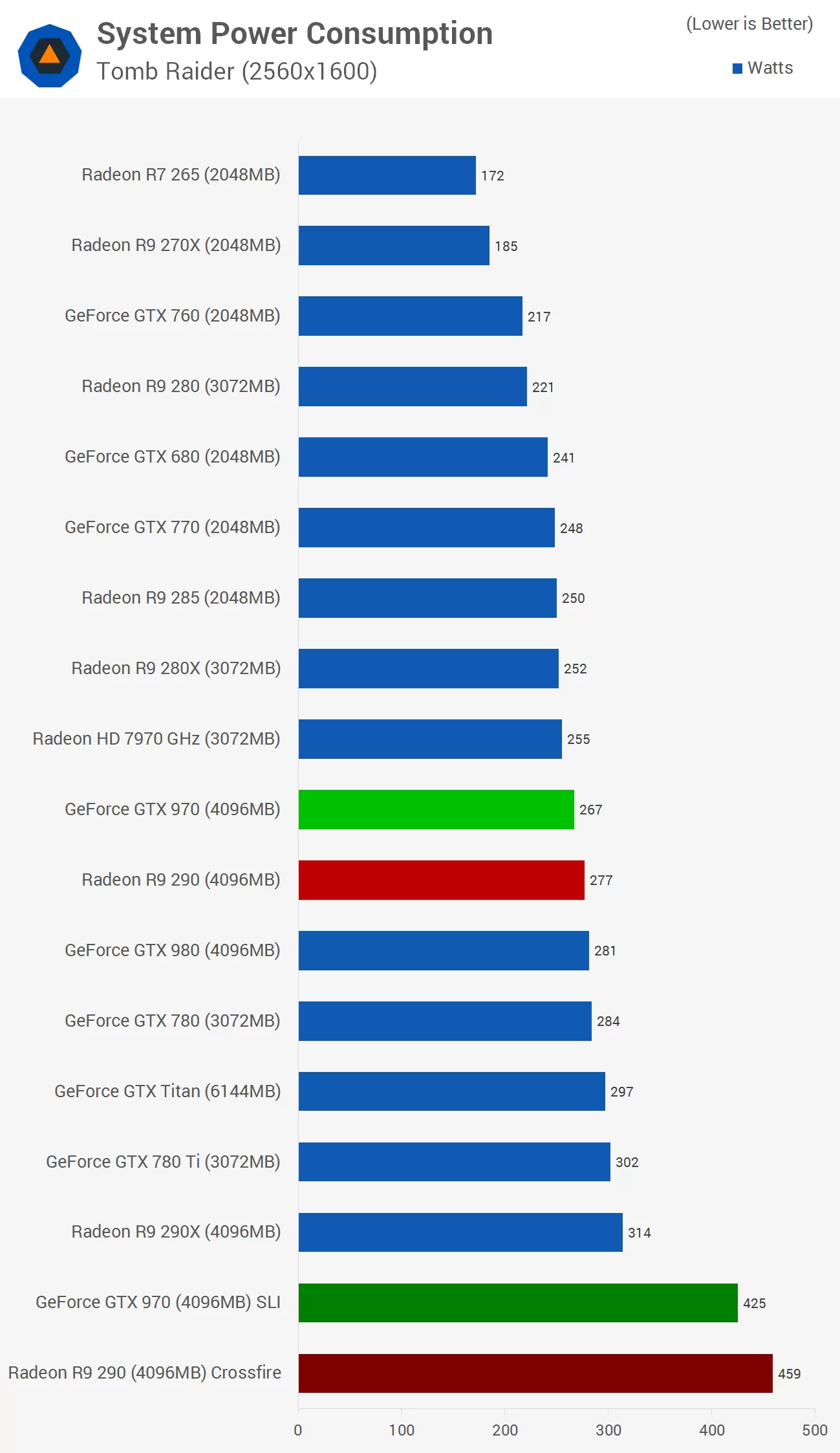Check the benchmarks, the 290 is in the dust even at 4k. (nothing is playable as a single card IMO). 290x and you have an argument.
Such ignorance...when your minimums drop below 30 when you're not using that much VRAM there's a problem related to performance.
Well, that's sort of cherry-picking, to be fair.
970 vs 290X
970 v 290
You give and take, and your choice of game and resolution does have some impact.
What story isn't told so well is frame time performance, and most bench results are from early driver releases, so it's difficult to determine if hardware or driver is truly at fault. There have been limited follow-up analyses with recent driver releases, and honestly, the ones that exist now are in the effort to find the issues.
I'd like to see frame time analyses of games at 4K or 5760x1080/5760x1200 - all done at settings that actually have playable framerates. That concerns me most, 1440p tests do nothing for me, and a lot of the 4K tests are done with atrocious framerates. And I don't think I've seen good SLI testing, outside of a
reddit thread, and that one focuses on absolute max settings, which results in, once again, atrocious minimum framerates. I've heard Shadow of Mordor essentially requires 6GB of VRAM for the Ultra texture pack, and the other games, even with averages in the 30s, you see the low minimum framerate, which alone is indicative of expected stuttering. It's tough to really say if the memory or the framerate/settings alone are responsible.
Even with other cards, I can't hardly stand to play any game when the average is in the 30s, because I know it will dip into the 20s or lower and it just plays very roughly. Don't be fooled into thinking 30fps is playable like on consoles, because those are capped at 30 (unless they are capped higher on some games, especially the current gen), and the games rarely cross below 30fps, and people complain when that happens because it's usually obvious.






